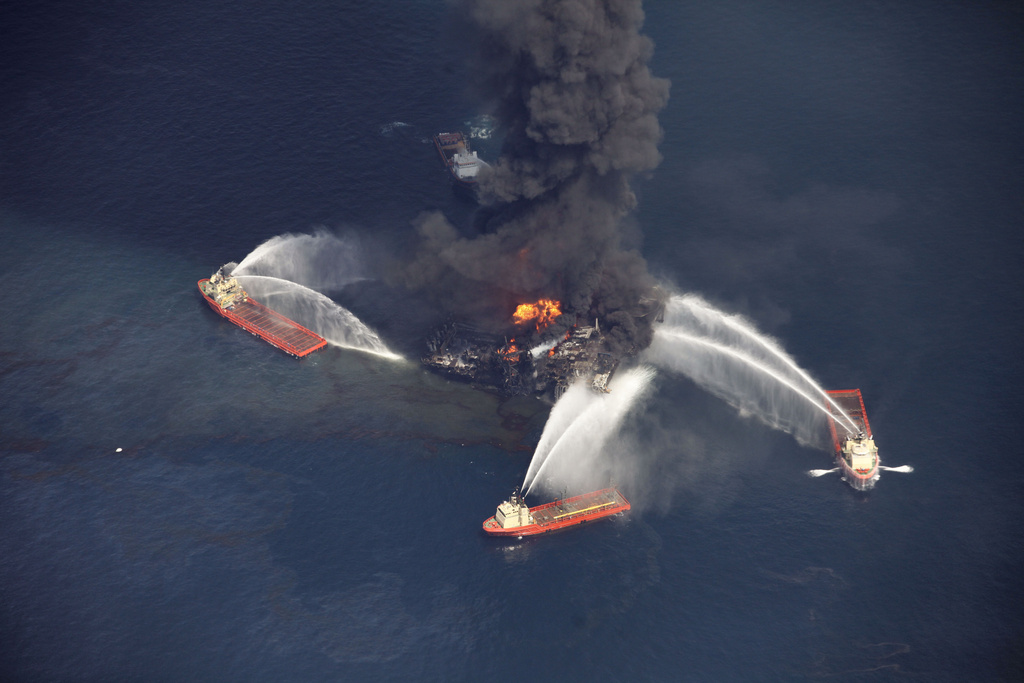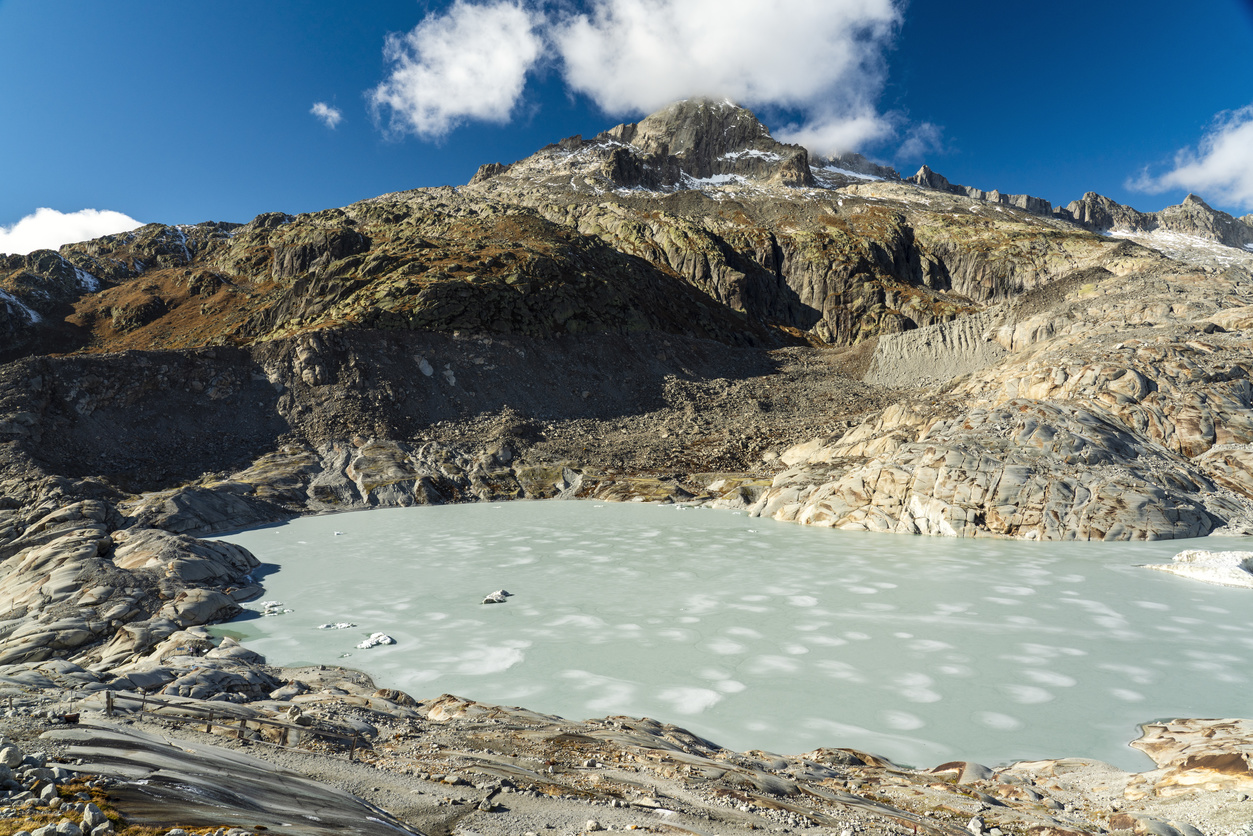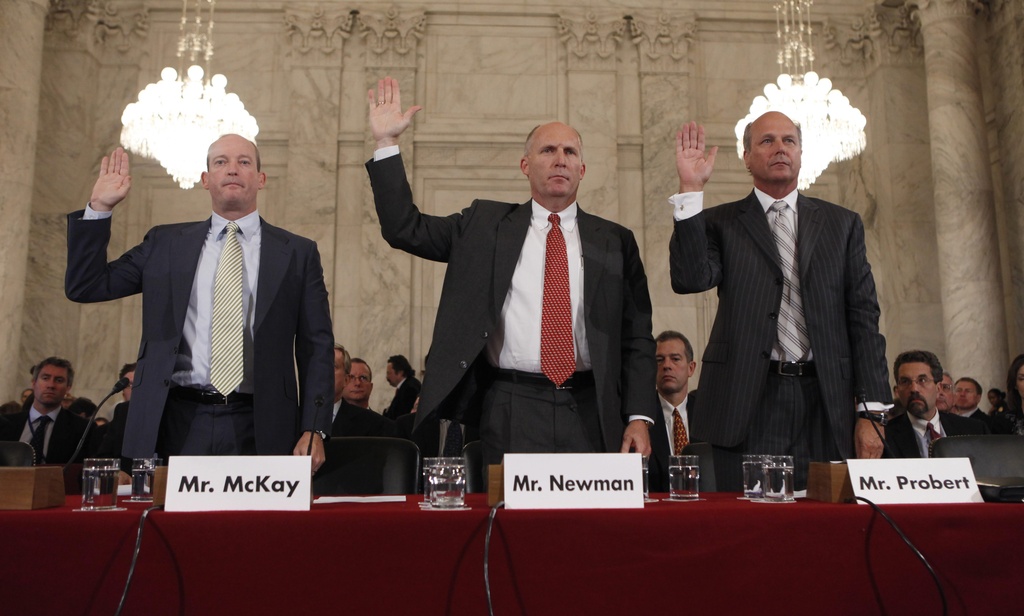
Invisible effects of oil spill remain

A year after the explosion on a drilling platform in the Gulf of Mexico, uncertainty remains about the long-term damage of the disaster.
Nickolaus Gelpke, a Swiss marine biologist and editor of the magazine Mare, tells swissinfo.ch that despite the appearance of things having returned to normal in the Gulf, it is impossible to calculate the effects of petroleum on the environment.
“Petroleum is a highly toxic substance, and even if it is no longer visible, it is still present in the food chain. In the long term, the effects on the ecosystem are incalculable,” Gelpke said.
Operated by British Petroleum (BP), the Deepwater Horizon drilling rig sank beneath the sea after a two-day fire which began on April 20, 2010, causing the deaths of 11 workers.
But worse was yet to come. Each day for 86 days, tens of thousands of barrels of crude oil gushed uninterruptedly from the mouth of the well, 1,600 metres below sea level. BP finally managed to stop the leak on July 15.
Today, even though the beaches of the southern coast of the United States are once again alive with holidaymakers and local fishermen are again casting their nets out to sea, the spectre of oil contamination has not disappeared.
Mysterious illness
In the three months following the explosion, the fauna and flora, the sea and the southern coasts of the US fell prey to the destructive effects of the leaked oil.
The world watched in amazement and incredulity as yet another ecological catastrophe unfolded, with seemingly constant media coverage of birds with feathers clogged by black tar, huge patches of oil floating in the sea, and once-pristine beaches invaded by the black sludge.
“These pictures had an enormous impact on public opinion. But the worst effects cannot be seen, because the real damage to the genetic pool is difficult to pinpoint,” emphasised Gelpke.
“It is still too early to evaluate the repercussions of the oil spill on human beings. However, studies done on volunteers who cleaned up the coasts of Galicia, in Spain (where the Prestige oil tanker sank in 2002), revealed a large number of people affected by skin cancer and respiratory problems.”
Initial reports taken from clean-up crews working on the spill in the Gulf of Mexico may indicate that contact with toxic substances adversely affected the health of workers there too. Local experts suggest the chemical compound benzene might be responsible for such health effects.
Disappearing act
Today, the estimated 780 million litres of crude oil that gushed from the stricken well have left little visible trace.
“After an oil spill, the key thing is the natural degradation process of the oil through bacteria,” explained Gelpke. “This process depends on the presence of what are called hydrocarbon-eating microbes and their level of activity, determined by the temperature of the sea. The hope for the Gulf rests on its unique characteristics: the warm water and the high number of very active bacteria give reason to believe that the greater part of the oil will dissolve.”
Gelpke remains sceptical of analysis released by BP of the situation, since there can be no reliable picture of what happens in such deep water.
“What I am sure of, is that this was the second-worst oil disaster in world history, after the one in the first Gulf War when the oil fields were blown up.”
The natural evaporation of the crude oil, combined with the tireless work of beach cleanup teams, the drawing of the petroleum to the sea surface, controlled fires out at sea, weather conditions, and the use chemical dispersants, meant that the worst was avoided.
However, all of the escaped oil did not just disappear.
“You just have to dig a bit down under the mangroves in the Mississippi delta to find petroleum sediment,” said Gelpke. “There it was impossible to clean the oily mass out of the ecosystem. Again, differently from other oil spills, this one went all the way down into the sea, and we just don’t know for sure how the crude oil has spread in the water column.”
Drilling resumes
Although they declared the Deepwater Horizon spill “the worst ecological catastrophe” in the country’s history, American authorities have lost little time turning the page.
After establishing tighter safety rules, the White House lifted the moratorium on deep-water drilling in the Gulf of Mexico last October and BP could resume its operations in the Gulf as soon as July.
“Even with more restrictive standards, you can’t control the situation in the depths of the sea,” warns Gelpke.
BP, apart from resuming drilling operations in the disaster zone, is also due to begin exploration in the Kara sea, north of Siberia in the Arctic, where Gelpke suggests the consequences of an oil spill would be dramatic, as was the 1989 case of the Exxon Valdez tanker spill in Alaska.
“The sea is a huge mass which dilutes a lot of pollution, and it does it fast,” said Gelpke. “At the present time, this characteristic is both a blessing and a curse for mankind. It means that we can go on dumping harmful substances into the water without thinking about the damage we are doing in the long term.”
April 20, 2010: an explosion on the drilling rig “Deepwater Horizon” starts a fire that causes the deaths of 11 workers.
April 22: the platform sinks. The safety valves on the oil well below the sea surface fail to function and crude oil begins to leak into the sea.
May 7: BP tries to seal the well with a cement and steel dome. The attempt failures. In the absence of a definitive solution, BP positions a funnel over the well to suck up parts of the crude oil. It also begins drilling two relief wells. The objective is to gain access to the main well and block it with cement.
July 15: BP announces it has stopped the oil leak.
August 3: BP starts an operation intended to seal the well permanently by injecting mud and cement into it through the nearby relief wells.
The US Justice Department is suing BP and Transocean as being directly responsible for the spill in the Gulf of Mexico.
BP, which leased the rig from owner Transocean, estimates its total costs arising from the spill at $42 billion (SFr37 billion).
This week BP launched legal action against Transocean, seeking $40 billion in damages and claiming the rig owner is responsible for causing the blowout because safety measures in place failed.
BP also this week launched legal action against Halliburton, claiming the company concealed information which could have prevented the disaster. Halliburton made the cement used to reinforce the well.
Multiple class action lawsuits have been filed against BP, Transocean and Halliburton by private citizens and businesses affected by the spill.
(Translated from Italian by Terence MacNamee)

In compliance with the JTI standards
More: SWI swissinfo.ch certified by the Journalism Trust Initiative









































You can find an overview of ongoing debates with our journalists here . Please join us!
If you want to start a conversation about a topic raised in this article or want to report factual errors, email us at english@swissinfo.ch.